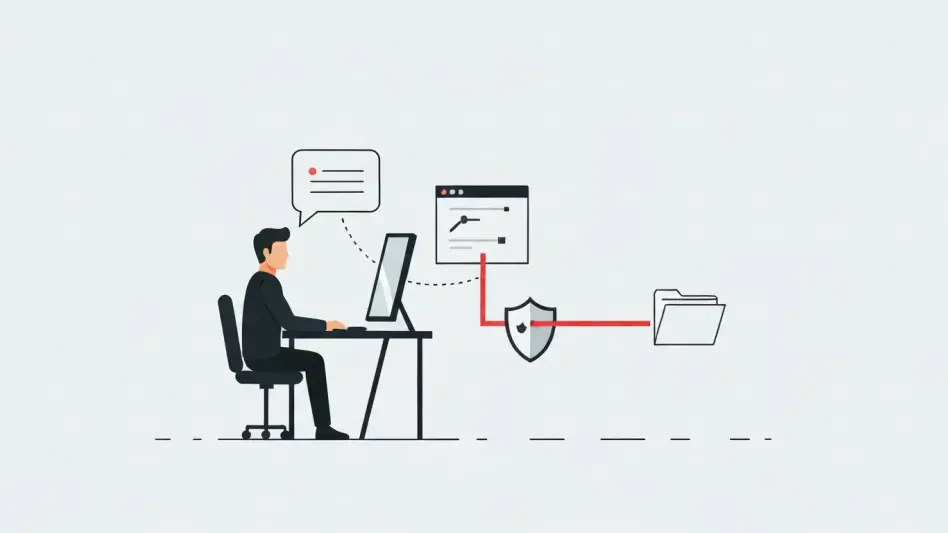The Red Sea, often seen as just a narrow strip of water on a map, holds an astonishing secret: it channels over 90% of the internet traffic between Europe and Asia through undersea cables, making it a critical digital lifeline. One wrong move—whether it’s a ship’s anchor or a seismic tremor—can snap this vital connection, bringing cloud services to a screeching halt for millions. Picture a bustling financial hub in Dubai, where traders suddenly face delays in executing time-sensitive stock deals, all because of a hidden rupture thousands of feet below the ocean surface. This scenario is no longer hypothetical; it’s the reality for Microsoft Azure users across the Middle East right now, grappling with disruptions that expose the fragility of global connectivity.
Why Cable Cuts in the Red Sea Spell Trouble for Cloud Users
The significance of this disruption cannot be overstated. Undersea cable cuts in the Red Sea are not just technical hiccups; they are seismic events for the digital economy, impacting everything from enterprise applications to personal communications in a region increasingly reliant on cloud technology. Microsoft Azure, a cornerstone for countless businesses, has been hit hard, with users facing unexpected latency that slows down critical operations. This incident shines a spotlight on the hidden vulnerabilities of the internet’s infrastructure, raising questions about how prepared the tech world is for such setbacks.
Beyond the immediate inconvenience, this event underscores a broader dependency on a handful of underwater pathways. The Red Sea’s role as a conduit for global data means any damage here creates a ripple effect felt across continents. For Middle East users, where digital transformation is accelerating, the stakes are particularly high as they navigate a sudden dip in service reliability.
The Red SeA Critical Yet Vulnerable Digital Highway
Diving deeper into the geography, the Red Sea serves as a narrow but vital corridor for fiber optic cables that link Europe, Asia, and Africa. This waterway carries a disproportionate share of global internet traffic, making it a linchpin for international connectivity. With multiple cables running through its depths, any disruption here can cascade into widespread outages or delays, as seen with the current Azure issues.
The region’s tight geography exacerbates the risk. Unlike broader oceanic expanses, the Red Sea’s confined space leaves little room for error, with cables more susceptible to damage from natural events or human activity. This bottleneck effect means that even a single cut can have outsized consequences, disrupting data flows for entire regions.
For tech-dependent economies in the Middle East, reliance on platforms like Azure amplifies the pain of such incidents. Businesses and individuals accustomed to seamless cloud access now face a harsh reminder of how fragile their digital backbone can be. This situation highlights the urgent need for robust safeguards in areas so critical to global communication.
Azure’s Struggle: Latency Woes and Regional Fallout
Turning to the specifics of the disruption, Microsoft reported the issue began at 05:45 UTC on September 6, with users in the Middle East experiencing noticeable latency. This isn’t a complete outage, but the delays are significant enough to hinder performance-sensitive tasks. Imagine a financial firm in Abu Dhabi facing sluggish transaction processing or a logistics company struggling with delayed real-time tracking—such scenarios illustrate the tangible impact of even partial service degradation.
Microsoft’s response has been swift, rerouting data through alternate network paths to maintain functionality. However, this workaround comes at a cost: data must travel longer distances, resulting in unavoidable delays. While this prevents a total blackout, it still leaves users grappling with slower response times, a critical issue for industries where every second counts.
The ripple effects extend beyond Azure, with reports of slowed internet services in the UAE and parts of Asia over the same weekend. This indicates a broader regional challenge, affecting multiple providers and underscoring the interconnected nature of global networks. Notably, users outside the Middle East remain unaffected, highlighting the localized yet severe scope of the problem.
Digging into the Mystery: Causes and Challenges of Cable Damage
Microsoft’s latest update at 19:52 UTC on September 7 confirms ongoing monitoring of the situation, but details about the cause of the cable cuts remain elusive. The company has acknowledged an active investigation, with a spokesperson noting that efforts are underway to pinpoint the source of the damage. This uncertainty adds a layer of frustration for users awaiting resolution.
Industry experts point to the immense challenges of repairing undersea cables, which lie thousands of feet below the surface. The logistics of deploying specialized vessels and the high costs involved often mean lengthy repair timelines. Historical incidents suggest potential causes could range from natural disasters like underwater earthquakes to human errors such as ship anchors dragging across the seabed, though no definitive explanation has surfaced yet.
This lack of clarity fuels concern about how long the disruptions might persist. With repair operations often taking weeks or even months, businesses and individuals must brace for prolonged delays. The complexity of deep-sea infrastructure serves as a stark reminder of the hidden intricacies behind the internet’s seemingly effortless operation.
Coping with Delays: Strategies for Businesses and Users
For those affected by Azure’s latency, practical steps can help mitigate the impact. Businesses are advised to prioritize non-time-sensitive tasks during this period, postponing critical operations where possible. Additionally, leveraging local data backups can provide a buffer against delays in accessing cloud-hosted resources.
Exploring temporary workarounds offers another avenue for relief. Companies with the capability might consider shifting operations to unaffected cloud regions or adopting hybrid systems that reduce reliance on a single provider. While not universally feasible, such measures can lessen the strain of disrupted services for some organizations.
Drawing inspiration from Microsoft’s rerouting approach, contingency planning emerges as a vital lesson. Mapping out alternate data paths or diversifying cloud providers can bolster resilience against future incidents. Staying informed through Microsoft’s daily updates also equips users with the latest information, empowering them to adapt as the situation evolves. Though control over undersea infrastructure remains limited, these strategies offer a proactive way to navigate uncertainty.
Reflecting on a Digital Wake-Up Call
Looking back, the undersea cable cuts in the Red Sea stood as a jarring interruption for Microsoft Azure users in the Middle East, revealing the precarious nature of global internet infrastructure. The incident exposed how a single point of failure in a narrow waterway could disrupt critical operations across an entire region. Latency, though not a complete outage, proved just as debilitating for time-sensitive tasks, affecting businesses and individuals alike.
Moving forward, this event demanded a reevaluation of dependency on singular digital pathways. It prompted a push for diversified network routes and enhanced backup systems to safeguard against similar disruptions. Stakeholders were encouraged to invest in resilience, exploring innovations in cable protection and alternative connectivity solutions. This chapter served as a catalyst, urging the tech community to fortify the unseen foundations of the digital world for a more stable tomorrow.








